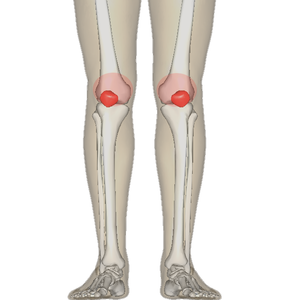Lateral Step Down Test: Difference between revisions
No edit summary |
Kim Jackson (talk | contribs) No edit summary |
||
| (2 intermediate revisions by one other user not shown) | |||
| Line 1: | Line 1: | ||
<div class="editorbox"> | <div class="editorbox"> | ||
'''Original Editor '''- [[User: | '''Original Editor '''- [[User:Lucinda hampton|Lucinda hampton]] | ||
'''Top Contributors''' - {{Special:Contributors/{{FULLPAGENAME}}}} | '''Top Contributors''' - {{Special:Contributors/{{FULLPAGENAME}}}} | ||
| Line 8: | Line 8: | ||
The lateral step-down test is a modification of standard step-down test in which the movement a lateral one versus anterior. It can be performed to assess hip and leg strength and endurance. eg in [[Anterior Knee Pain]] examination | The lateral step-down test is a modification of standard step-down test in which the movement a lateral one versus anterior. It can be performed to assess hip and leg strength and endurance. eg in [[Anterior Knee Pain]] examination | ||
== Performing the Test == | |||
Instructions for the lateral step down test are as follows. | Instructions for the lateral step down test are as follows. | ||
| Line 15: | Line 16: | ||
Patient should be rated on the criterion listed in Table 1<ref>Manske RC, Davies GJ. [https://www.ncbi.nlm.nih.gov/pmc/articles/PMC5095938/ Examination of the patellofemoral joint. International journal of sports physical therapy.] 2016 Dec;11(6):831. Available: https://www.ncbi.nlm.nih.gov/pmc/articles/PMC5095938/<nowiki/>(accessed 12.1.2022)</ref>. | Patient should be rated on the criterion listed in Table 1<ref>Manske RC, Davies GJ. [https://www.ncbi.nlm.nih.gov/pmc/articles/PMC5095938/ Examination of the patellofemoral joint. International journal of sports physical therapy.] 2016 Dec;11(6):831. Available: https://www.ncbi.nlm.nih.gov/pmc/articles/PMC5095938/<nowiki/>(accessed 12.1.2022)</ref>. | ||
== Scoring the Test == | |||
The test is scored according to 5 criteria: | The test is scored according to 5 criteria: | ||
{| class="wikitable" | {| class="wikitable" | ||
| Line 49: | Line 51: | ||
<references /> | <references /> | ||
[[Category:Knee - Assessment and Examination]] | |||
[[Category:Hip - Assessment and Examination]] | |||
[[Category:Assessment]] | |||
[[Category:Sports Medicine]] | |||
Latest revision as of 10:10, 12 January 2022
Original Editor - Lucinda hampton
Top Contributors - Lucinda hampton and Kim Jackson
Introduction[edit | edit source]
The lateral step-down test is a modification of standard step-down test in which the movement a lateral one versus anterior. It can be performed to assess hip and leg strength and endurance. eg in Anterior Knee Pain examination
Performing the Test[edit | edit source]
Instructions for the lateral step down test are as follows.
- Patient is to stand with involved leg on a 15 cm step. This will require most to bend the knee at about 60 degrees.
- Patients are asked to reach down and touch the opposite, non-involved heel to the ground, then return to the starting position.
Patient should be rated on the criterion listed in Table 1[1].
Scoring the Test[edit | edit source]
The test is scored according to 5 criteria:
| Criteria | Interpretation | Score |
|---|---|---|
| Arm Strategy | Subject used his arms in an attempt to recover balance | +1 |
| Trunk Strategy | Trunk leaned to one side | +1 |
| Pelvic Plane | Pelvis rotated or elevated | +1 |
| Knee Position | Knee deviated medially and the tibial tuberosity is medial to second toes
Knee deviated medially and the tibial tuberosity is medial to medial boarder of foot |
+1
+2 |
| Steady Stance | Subject stepped down on the non-tested side or became unsteady | +1 |
- Total score of 0 or 1 was classified as good quality of movement
- Total score of 2 or 3 was classified as medium quality
- Total score of 4 or above was classified as poor quality of movement[2][3]
References[edit | edit source]
- ↑ Manske RC, Davies GJ. Examination of the patellofemoral joint. International journal of sports physical therapy. 2016 Dec;11(6):831. Available: https://www.ncbi.nlm.nih.gov/pmc/articles/PMC5095938/(accessed 12.1.2022)
- ↑ Whiler L, Fong M, Kim S, Ly A, Qin Y, Yeung E, Mathur S. Gluteus medius and minimus muscle structure, strength, and function in healthy adults: brief report. Physiotherapy Canada. 2017;69(3):212-6.
- ↑ Piva SR, Fitzgerald K, Irrgang JJ, Jones S, Hando BR, Browder DA, Childs JD. Reliability of measures of impairments associated with patellofemoral pain syndrome. BMC musculoskeletal disorders. 2006 Dec 1;7(1):33.







